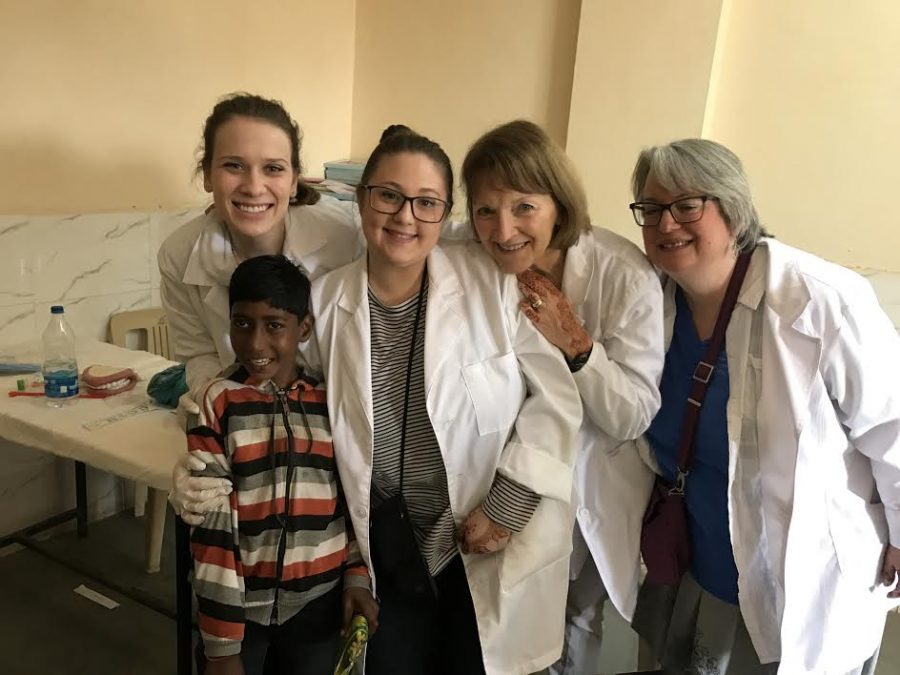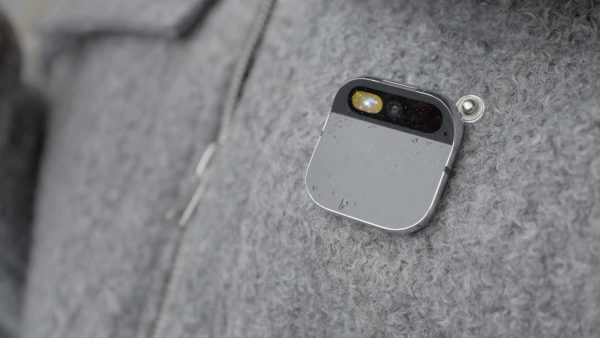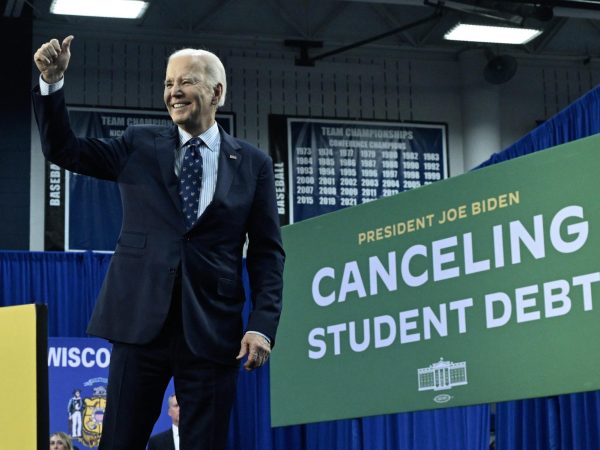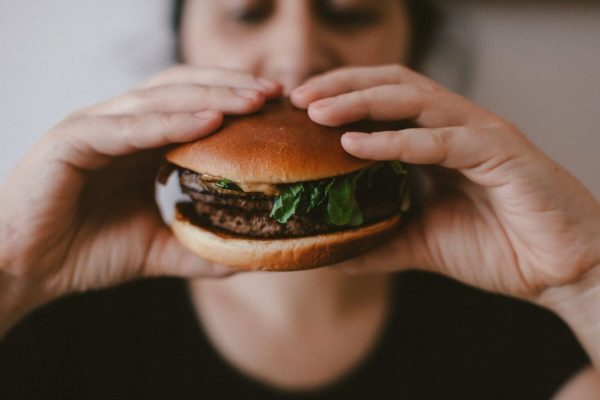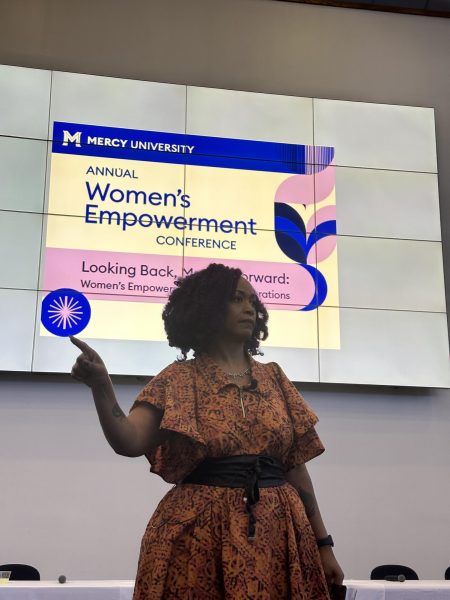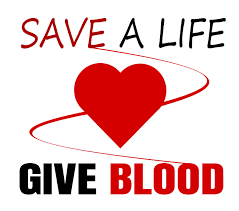Two Mercy Students Lending a Hand Healing the Children in India
After Emily Beck and Natalia Kartholl boarded their third plane and traveled 36 hours, they sat in the taxi excited. Their words became fewer as they gazed into the town of Ujjain, India, speechless.
The farther the taxi went down the road, the more the two were hit with culture shock.
Cows were everywhere roaming the streets. People were walking in every direction, barefoot. Houses were on top of each other. Some some were made out of tires and tarpits, even trash.
As they approached a single street light, their anxiety began to build. Their eyes widened and hearts broke once they passed a group of children.
“Some were unclothed, while many babies weren’t wearing diapers,” Kartholl said.
“They were playing with just dirt and sticks, and it seemed normal,” Beck said. “They were so skinny, you could see their bones.”
Seeing this made the two extra anxious and nervous for what was to come on their first day at Chandrikaben Rashmikant Gardi Hospital. But it definitely ensured the two that being in India was somewhere they needed to be, to lend a hand in helping the children there.
Beck and Kartholl, both second year graduate students majoring in Communication Disorders, were selected through a lottery to join Healing the Children’s trip. They were joined with professors, Dr. Helen Buhler, the Director of Communication Disorders and Dr. Shari Berkowitz, an assistant professor in Communication Disorders.
Healing the Children is a charitable organization that provides medical care to children all around the world and is predominately volunteer based. Their vision is to see that every underserved child has access to medical care, regardless of the ability to pay, insurance status, or physical location.
Since their establishment in 1979, Healing the Children have successfully helped over 250,000 children in over 95 countries to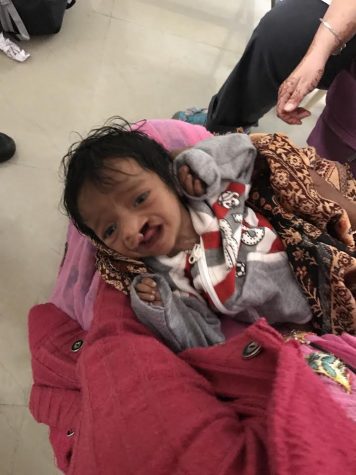 date. They’ve provided over $700 million of medical services via the healthcare professionals who donate to the foundation.
date. They’ve provided over $700 million of medical services via the healthcare professionals who donate to the foundation.
Healing the Children is an organization Mercy has joined forces with many times in the past, such as when they sent students to Colombia, Peru, and Thailand. It was the first time a trip to India was offered, and the pair accepted despite not speaking Indie.
The itinerary of the trip was to spend ten days in Ujjain and Indore, India, and to provide surgery and therapy to children with cleft lip or lip palate, depending on the severity.
Cleft lip, or lip palate, occurs when an opening in the upper lip is extended into the nose. The medical condition happens when the roof of the mouth contains an opening into the nose.
“The child basically has a gaping hole in the roof of their mouth,” Beck said.
“Some people call it hair lip. It can be unilateral or bilateral,” Kartholl said as she demonstrated what it looks like.
The disorder can result in feeding, speech, and hearing problems, as well as frequent ear infections. Less than half the time, the condition is associated with other disorders.
The problems that resulted from this medical condition was the reason why Beck, Kartholl, Buhler and Berkowitz were all there, as they were offering speech therapy to patients, whether it was prior or post surgery.
“Surgery was the main concern, though,” Kartholl said.
They were joined by a group of 230 who consisted of craniofacial surgeons, surgical residents, anesthesiologists, PACU (postanesthesia care unit) team, operating room and recovery nurses.
“Many of the medical staff attending were from small established hospitals and were prominent surgeons, who came from Helen Hayes, Montefiore, Westchester Medical and Sloan-Kettering,” Kartholl said.
“They were amazing and felt like a big family,” added Beck.
***
The first hospital was in Ujjain, which is situated in a very small yet poor city. Chandrikaben Rashmikant Gardi Hospital has almost every specialty one could think of.
The medical staff there were overly welcoming to Healing the Children.
“The hospital staff in Ujjain were extremely accommodating,” said Beck. “They welcomed us with a beautiful ceremony and were believably grateful.”
It’s not only a medical teaching hospital, but also provides free services to anyone who comes in.
“Free surgery, free anything,” Beck said.
The first day they were there consisted of screenings to see what children qualified for surgery based upon severity.
Though Beck and Kartholl only knew a little about cleft lip and lip palate from their undergraduate and graduate classes, it didn’t stop them from being nervous.
“We went in pretty blind,” said Beck. “We were expecting to just go with the flow and learn from what our professors did and pick it up from there.”
And that’s exactly what they did as they provided many families with skills and techniques they could use in their home, post hospital.
One of the biggest forms of therapy they would offer for cleft lip and lip palate was feeding therapy. Many of the babies they saw were extremely malnourished and too little to receive surgery. There were a few, however, who received surgery and needed training for feeding post surgery.
They would provide families with specific cleft lip and lip palate bottles, where the nipples are wider than the common baby bottles. These bottles also shoot the milk to the back of the baby’s throat, bypassing the cleft lip palate, so the milk isn’t regurgitated through their nose.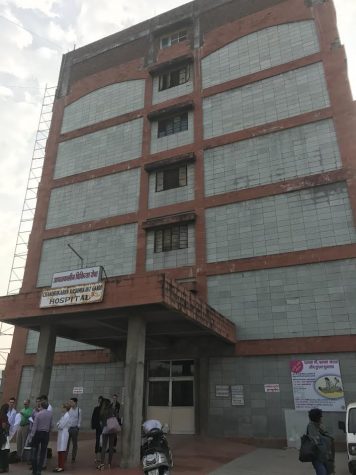
“Children with cleft lip and lip palate are more likely to be malnourished because the food and nutrients are being regurgitated through their nose or side of their mouth,” Beck said firmly.
“When that happens, some children just become agitated that they can’t eat properly, so they don’t eat at all,” she added.
In cases like this, after providing the special bottle, Beck and Kartholl would tell the parents what to add in the milk to help the child gain weight.
“Adding butter and oil will increase the fat and help the baby gain weight to become well nourished,” Beck said.
“The bottle also measures the amount of milk that is going to come out,” Kartholl added, “so the child or baby isn’t getting too much at a time.”
Kartholl also explained that formula isn’t a thing in India, as many cannot afford it and they resort to drinking pure cow’s milk.
“They’re not receiving the nutrients, fats, and vitamins that way,” Kartholl said. “So adding them into the milk definitely helps.”
This is something the two agree not many people realize speech pathologists do. But with each child who came through the doors with cleft lip and lip palate, they gave the most effective therapy they could to help them in the long-run.
“The chances of them ever seeing a speech pathologist ever again are slim,” Kartholl said. “That’s why we gave them as much as we could in the time we had.”
People of Ujjain have to travel almost two hours just to receive services in Indore, which was the second hospital location Healing the Children visited. Unique Specialty Hospital is the central location for anything medical, but the only problem is not many could afford to pay for the medical expenses.
Regardless of the distance and expenses, there are only about 20 speech language pathologists, Kartholl explained, as it’s extremely limited there, in a city of 1.5 million people.
The following days, they had no clue who was going to walk through the doors next, as they saw a wide variety of patients with disabilities, coming to see them just for speech therapy.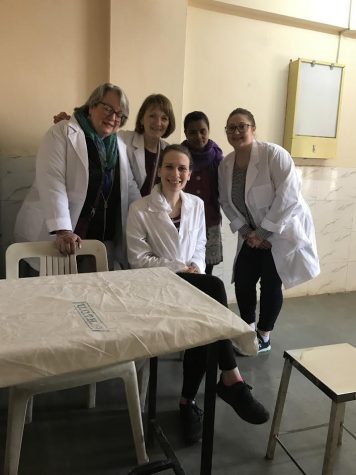
“We think word got out that speech pathologists [we] were there because we saw about 36 patients one day, where we worked almost ten hours,” Beck said. “At one point, we had to do crowd control.”
Among the disabilities were children who had stuttering problems, autism, language and developmental delay, hearing impairment, and even down-syndrome.
“The vast variety of disabilities we saw were many that could not be treated with surgery,” Beck began to say, “but in America, we would be able to treat by providing therapy, the best we could.”
“We spent a lot of time with them to basically give parents techniques for increasing their child’s language,” added Beck.
Among the therapy they would give was communicative temptations. It’s when a parent is tempting their child to communicate by keeping a desired item out of reach. The child would then have to vocalize in order to obtain the desired item.
“If the child wants milk in the bottle, the parent doesn’t just give it to them,” Kartholl said.
“The child could do any type of vocalization,” she continued as she let out a closed-lip moan, imitating what the child could do in order to receive the milk.
“The child cannot throw a tantrum but has to communicate in some way, even if it’s signing.”
Another efficient therapy that the two would give families was coming up with a list of about five words and only focusing on those five words. The words would consist of everyday items the child would see in their natural surroundings.
“Cow, milk, water, rice, food,” Beck said as she listed functional words seen in India everyday.
“Cows just roam the streets there and are something a child would see because they’re sacred to Indie culture,” Beck continued, “while here in America, it would be dog or cat.”
Another task Beck and Kartholl took on besides being speech pathologists and giving therapy, was counseling families who were emotional about their children due to lack of education, speech, language, and lack of knowledge.
“We had a couple of parents who were crying with their children, wondering and hoping if their child would ever be ok,” Beck said. “We would reassure them that their child was not dumb; their child was just special.”
“We would tell them their child was going to be okay with much love and support from their families,” she added as she described how difficult it was watching families break down into tears.
Though it was heartbreaking to watch families almost losing hope, Beck and Kartholl believe another big challenge was denying therapy to children who had disabilities that were so severe they couldn’t do much.
“It was difficult to kind of tell the parents that this was a little too extreme for us,” Kartholl said as she described one child in particular they saw.
The child had severe language and motor impairment, resembling cerebral palsy, but the two cannot diagnose what he had specifically. The help this child needed extended beyond the thirty-minute period Healing the Children were offering patients.
“He would have benefited from lifetime or long-term treatment,” Beck said.
They would never straight out tell the parents there’s nothing they can do. Instead, they would provide any advice as they possibly could in the amount of time they had.
“It was extremely emotionally difficult for not only myself but for all of us,” Kartholl said as her voice softened. “But we did as much as we possibly could.”
They saw about six or seven of those patients, maybe more, and each time, it didn’t get any easier. But the time Healing the Children gave these patients meant the world to them.
“There would be families who got there at 9 a.m. and waited until almost 6:30 just to see us with their children,” Beck said.
When the volunteers told the families they would be given a half hour each, they were all blown away. Anything Healing the Children could offer was big to the families waiting.
“They thought 15 minutes was sufficient enough, but we wanted to give them just as much as we could,” Kartholl said.
Although the organization is advertised as Healing the Children, and that was its focus, many who came to the hospital were also adults. They came for facial reconstructive surgery for abrasions of the face, moles, and even burns.
If the cases were severe enough, surgeons were willing to operate on those patients and help as many as they could, instead of turning them away.
“The main focus was children and children with cleft lip and lip palate,” Beck said.
***
With each child who walked through the door, there was always a story that came with them and inspired Beck and Kartholl.
“They were all heartwarming for sure,” Beck said as she quickly referred to ten-year-old Nilopher, with whom she says she made a connection.
When Nilopher walked into the room with her mother, she had the biggest smile Beck had ever seen.
She watched as the smile never left the little girl’s face, as her mother explained to the clinicians how worried she was that her daughter only had five words in her vocabulary.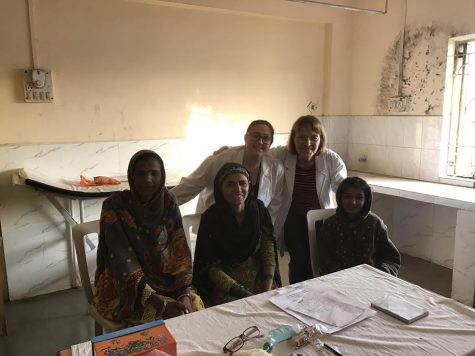
“She was worried because by ten years old, one should be speaking in full, complete sentences, no worries,” said Beck.
The team did a screening on Nilopher, but she did not pass. Beck and Kartholl say that luckily, there was an audiologist there, who’s not normally there everyday at the hospital. After referring the little girl to the audiologist, she received a hearing evaluation with a diagnosis that she was profoundly deaf.
They offered the mother and daughter counseling and helped to find that they were eligible for free hearing aids, so Nilopher will be receiving one soon.
“She was never able to hear a day in her life,” Beck said wholeheartedly. “It’s crazy how the little things like a hearing aid could change someone’s life forever.”
It wasn’t that though, that amazed Beck the most. It was Nilopher’s smile.
“Her smile was just so precious and she was the happiest little girl I’ve ever seen,” added Beck with a smile on her face.
There are many cases that of Nilopher that stands out and remains with a clinician for a very long time because of how humbling they were, as Kartholl explains.
The first baby she ever gave therapy to was baby Sia, who was only four pounds.
The baby continually cried and wasn’t fed properly because her family thought she was going to receive surgery. But because she was very tiny, surgery wasn’t an option for her.
“That was extremely emotional for me because she was so precious,” Kartholl said.
To help baby Sia, Kartholl supplied the grandmother with the specific bottle and milk she needed and demonstrated how to feed her. While showing the grandmother how to feed her, she took to it very well and eventually stopped crying.
“We told the grandmother, ‘Listen, if you can get this baby to gain weight, you can come back. We’ll be back next year and in a year, she can get the surgery she needs,’” Kartholl said as she explained that the baby’s name was a play on words.
Kartholl spells baby Sia’s name as ‘S-e-e-y-a’ as in ‘see ya later,’ because it wasn’t a goodbye.
“I do plan on going back, if not India, definitely somewhere else, to help more children because of how heartwarming it was,” she said as they both explained the worries and problems that Americans face are not even comparable to those that families in India deal and struggle with on a daily basis.
***
Beck and Kartholl can go on for days talking about their trip to India, but they both agree that volunteering for Healing the Children was more than what they thought it would be.
“I can still picture almost every single patient’s face we saw,” Beck said.
Not only was it rewarding and fulfilling, but it made them better clinicians for sure.
“We had to think pretty quickly on our feet and took whatever knowledge we had and put it to use in the most effective way in the matter of a thirty-minute session,” Beck explained.
They touched upon many disabilities and disorders that they may never see in their future workplace, regardless of how broad their field is.
“One patient had cleft lip, and then the next was a ten-year-old girl who has never spoken before and was deaf,” Beck said. “We really had no idea what was walking through the door.
“But we gave them everything we possibly could,” Kartholl added.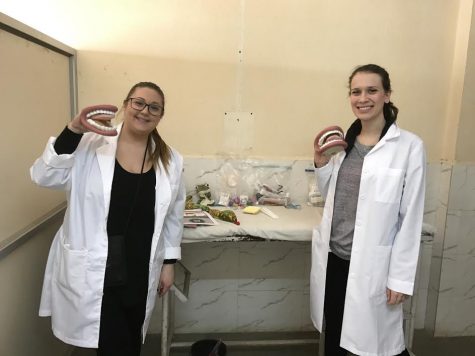
It was pleasant for the two to work beside an incredible team of volunteers and medical assistants, as they’ve been talking about trying to go again, hopefully in the near future.
“India was life changing, and taught me never to take anything in life for granted again,” Beck said.
The two look forward to working with school-aged children with autism, offering the most effective therapy, and touching lives one by one, just as Nilopher and Baby Sia did to them.
“It was nice to experience the medical aspect,” Kartholl said, “but we know where our passion lies.”
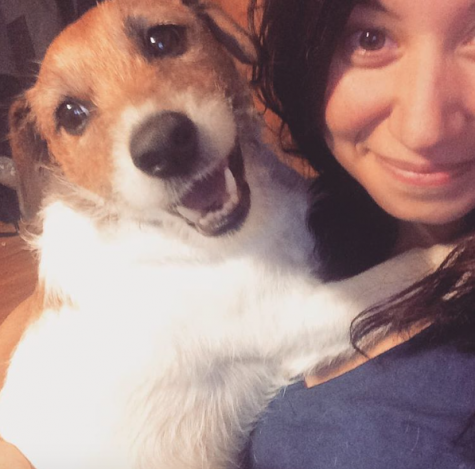
Kayla Simas is a Journalism major at Mercy College. She's from the forgotten borough of New York - Staten Island. She's an avid coffee drinker and enjoys...



